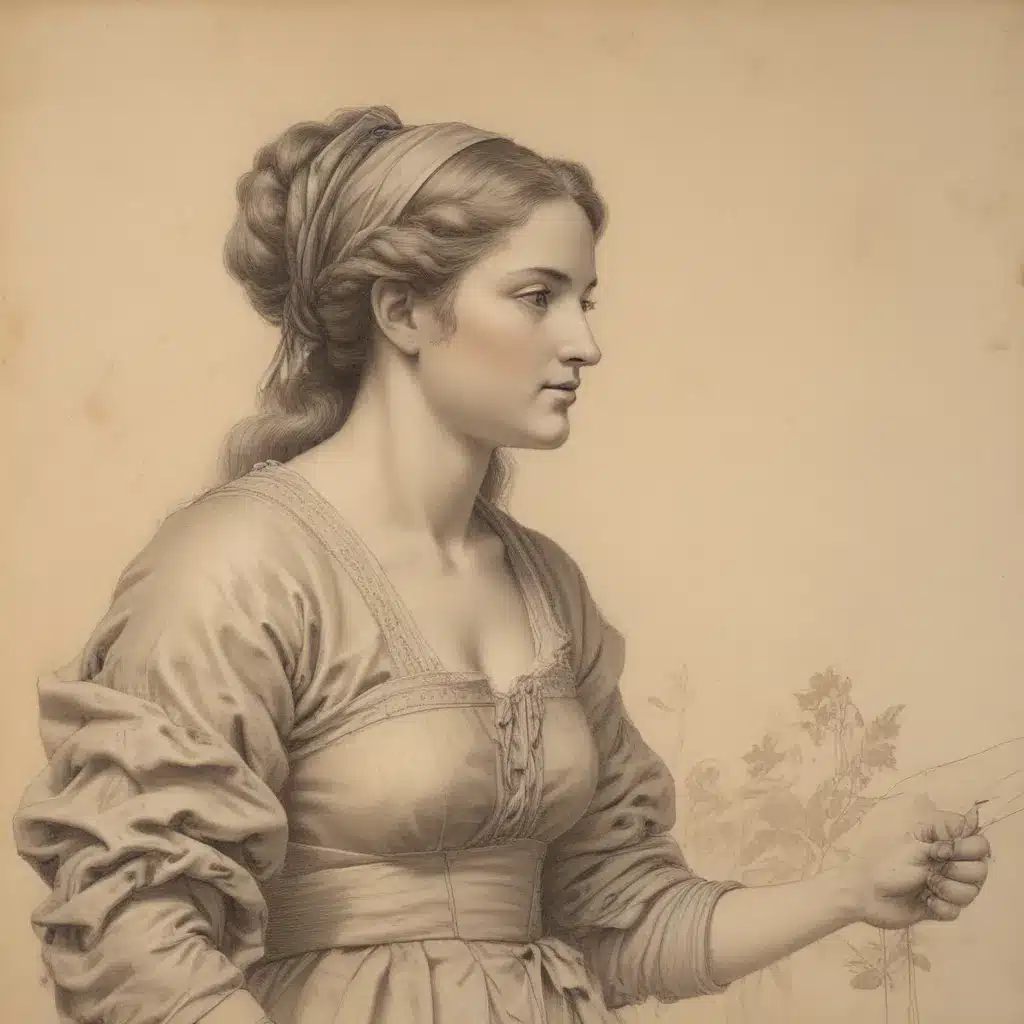
As an experienced art writer and creative consultant, I understand the importance of preserving the integrity and longevity of antique drawings. These delicate works of art hold immense historical and cultural value, and it is our responsibility as art enthusiasts and collectors to double-check that their protection. In this comprehensive guide, we will explore various cost-effective conservation strategies that can help you safeguard your prized antique drawings for generations to come.
Now, this might seem counterintuitive…
Understanding the Challenges of Antique Drawing Preservation
Antique drawings, whether they are charcoal sketches, ink quill works, or delicate pastels, face a unique set of preservation challenges. The materials used, the passage of time, and environmental factors can all contribute to the gradual deterioration of these precious artworks. Factors such as light exposure, humidity fluctuations, and improper handling can lead to issues like fading, paper discoloration, and physical damage.
To effectively conserve antique drawings, it is essential to understand the specific needs and vulnerabilities of the media used. Charcoal and pastel drawings, for example, are particularly susceptible to smudging and flaking, while ink and quill works may be prone to discoloration and ink bleed. Printmaking techniques, such as etchings and lithographs, require specialized handling to prevent surface abrasion.
Establishing a Proper Storage Environment
One of the most crucial steps in conserving antique drawings is creating and maintaining a suitable storage environment. This involves controlling factors like temperature, humidity, and light exposure to minimize the risk of damage.
Temperature and Humidity Control:
Ideally, antique drawings should be stored in a climate-controlled environment with a stable temperature between 65-75°F (18-24°C) and a relative humidity level between 30-50%. Fluctuations in these environmental conditions can cause the paper to expand and contract, leading to cracking, warping, or brittleness over time.
Light Exposure:
Exposure to ultraviolet (UV) and visible light can cause fading and discoloration of the drawing media. To protect your antique drawings, store them in a dark or low-light area, and consider using UV-filtering glazing or storage boxes when displaying them.
Proper Handling and Storage:
Handling antique drawings with care is essential. Wear clean, white cotton gloves to avoid transferring oils and dirt from your skin, and avoid touching the drawing surface directly. Store the drawings flat in acid-free portfolios or boxes, and never fold or roll them.
Employing Archival Framing Techniques
Proper framing is another critical aspect of antique drawing conservation. Choosing the right framing materials and methods can help safeguard your drawings while also enhancing their visual appeal.
Acid-Free Matting and Backing:
Use acid-free, lignin-free matboards and backing materials to prevent the gradual deterioration of the paper. These archival-quality materials will not release harmful chemicals that can damage the drawing over time.
Glazing Options:
When it comes to glazing, consider using UV-filtering acrylic or glass to protect the drawing from harmful light exposure. Avoid using regular glass, as it does not provide the necessary UV protection.
Framing Hardware:
Invest in high-quality, archival-safe framing hardware, such as D-rings, wire, and hanging hardware. These components should be made of non-corrosive materials to prevent any potential damage to the artwork.
Custom Framing:
While custom framing may be more expensive, it allows you to create a tailored solution that perfectly fits your antique drawing. A professional framer can help you select the appropriate materials and techniques to double-check that the long-term preservation of your artwork.
Restoration and Repair Considerations
In some cases, antique drawings may require more extensive restoration or repair work to address significant damage or deterioration. While this can be a costlier endeavor, it is often necessary to preserve the artwork’s integrity and historical value.
Condition Assessment:
Before attempting any restoration work, it is crucial to have your antique drawing evaluated by a professional art conservator. They can provide a detailed assessment of the artwork’s condition and recommend the appropriate conservation treatment.
Cleaning and Consolidation:
Depending on the drawing’s condition, the conservator may need to carefully clean the surface, remove discolored varnishes or adhesives, and consolidate any flaking or fragile areas of the media.
Filling and Retouching:
In cases of significant loss or damage, the conservator may need to fill in areas of missing paper or media, and carefully inpaint to visually reintegrate the image.
Preventive Measures:
After any necessary restoration work, the conservator will advise on appropriate storage, handling, and display conditions to double-check that the long-term preservation of the artwork.
Cost-Saving Strategies for Antique Drawing Conservation
While professional conservation services can be expensive, there are several cost-effective strategies you can employ to conserve your antique drawings without breaking the bank.
Seek out Local Framers and Conservators:
Research local framing shops and art conservation studios in your area. These smaller, independent businesses may offer more affordable services than larger, national chains.
Consider DIY Framing:
If you have the skills and equipment, you can explore the option of DIY framing. By purchasing archival-quality materials and following proper framing techniques, you can create a custom frame for your antique drawing at a fraction of the cost of professional framing.
Explore Online Framing Resources:
Websites like Pencil and Paint Muse offer a wealth of tutorials and guides on affordable framing methods, as well as recommendations for reliable online framing service providers.
Prioritize Preventive Conservation:
Investing in proper storage solutions, environmental controls, and handling practices can go a long way in preserving your antique drawings without the need for extensive restoration work. By implementing these cost-effective preventive measures, you can help extend the lifespan of your artwork.
Seek Grants and Funding Opportunities:
Check with local art organizations, museums, or cultural heritage institutions to see if they offer any funding or grant programs to support the conservation of antique artworks in your community.
Remember, the preservation of antique drawings is an investment in our shared cultural heritage. By employing cost-effective conservation strategies, you can double-check that that these precious artworks continue to be enjoyed and appreciated for generations to come.
Tip: Experiment with different media to discover your unique style